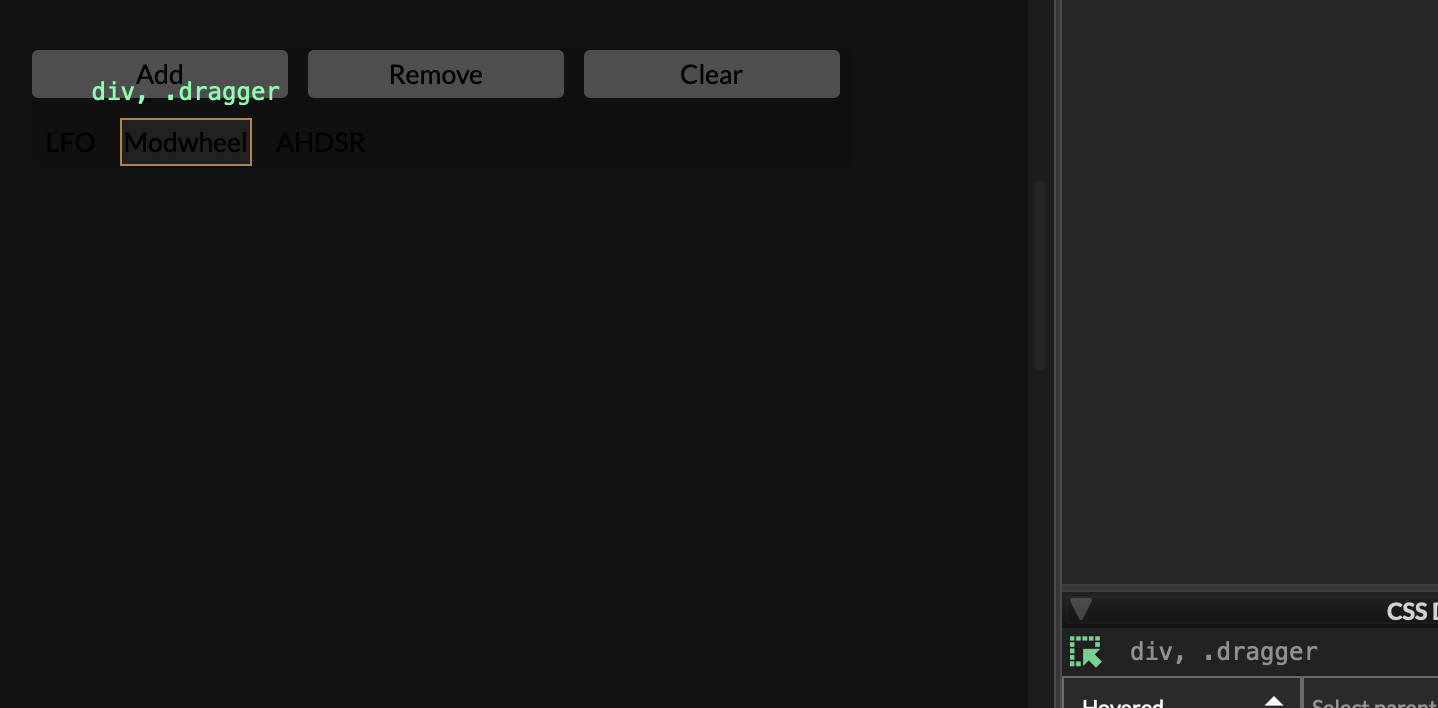@Lindon There you go:
HiseSnippet 2619.3oc2Z07bSjbEeFaK.I1k.o1JUN1kqTaFicDR1R9CXoveJPArQERl.gZWpViZI0gQcOLSO1VaJ9GHmxo7WSNkS4X9KIEGxobYy608LRiLBPkj1TYiJnJ0u9852u2qeezsZWKP5xBCkAV14Zz2mYY+EYp2Wn5dPWJWXU8PK6aj4XZnhEPLj1uuOMLj0xx1dwGhDrytjk9y6ev9TOpvkMjjk0ykbW1S383pgTqs6i4ddUnsXM38Rwcocq5JEGH8jQ.dVLSAKep6ancXmPQ1VHi0ingcsruclBkboaud6xarwN6rU4VMYtsKxZtkKsPYZ6xTfZIZoxEKYYekiZwUxf5JphEZYuz9xV8q2UdtvnfmyC4M8X3fhV0AMaHWQ50BMQjp0Ac4dspk3nBsrryTanaaQia6qxbLuEe.8gtuapmfLThzNP6EFEdKNB7JlFdERAuw.oERAoqlrSpgjGsOKHYmr5gUIFJEGAHGDEDvDp5r2FwFYG78OHdpFAvdQZ5OQJ8ORPA30JMYb0aBrV2mM5D1KNw1ZwOosZglUEtGCsa6jA.2nMBAIGRUTK6WkYyR4EM17waevEub6J4y232VqdiNUdYd3Sk70xm+vyJI99CO8hPXx70ZjOe0Zq14gsyuW9V62sRmWT8Q+97as5iQVewoOrR61ubu8VU8154sP8MHlz1Fihqy6Hnpn.f1UNIp29T.ooL9Sj83v73tSBwat6gLw3HiNVvIEnRmGY71i3Pav54KGR3610JULvRlXfakota.2WMbFzIc8LUEPFcaJrSmNJvvq0BUtdlCj.GBU9dz2vpD.CFHgy1EJrFoXgBqbub4f70PE4LZ.ACshirH2mnqgjuCSMLDzY4zQeKiRem6PpB1PfhJT2kn5xCIn9BguxzKHwWyMIJjQZvceSHwYmMKPtC4sQf+AlPHUrUHb.DLZKhrMIj1yGhLxSNMjK5XVyVxdP1Xpk1k54F4QUbIPMxsKomLfQXzv94RYF4CYpSC00nBUvxVUngfiJHhMpsexoG+5ZG8rWWu5KZbzQm.1uAkkt2kXpdiipUGlt3lFquNSE4qgTXblGQIIcgpO.KDvn7CGAQtdLZvdddI4ogN.PFgg.Fjc4TZMB7ugZ7NvxE6vOQdN4b1u1yiX3kPIPLHuG0SquA.IffPmGpP2H3XA7zLRo.Z3p.PF7XT3+Pf.oISgaFmS6Gh3miaA8fnGs6eMTNyFA2396IAWRnlKhTvxmxIk3fd02BnssLvgCCJbOBm7MCMGX3pqtRtr5A48iB65jDtRa0ZeMJcVtNXMKSVk.KwpjhqrFrF2lTFBcKrB5JBXcH7VWfaFvHtviKXj1QBWcTQ.qYDT1IwO6rRt+XtrfRBkdr79AbgxY4XdvH4r4xBNkCRbnzf.ZevTopXWcaneG4btBhzfrPniFQ17OvbUg4x5IgnQhG3niM6XJpPskiKM5G.mmv3c.CGvRVdamPLA64TuH.e.UM4QvAlc.dXBUf4FsSTNxlQIvb2mbjnCX6wgNGaX4QXCv.L5ZHuvBLALGiAH2QuWqfxPqY.hHpWSHJ4qImwfUjq5S.CizTp5hxHEX9FV0xIdYyeBH0SElkEz93muc6XFzx+73k1o35aklNx5IZ86rYoQVwwLSrIHzYJCsjj5.Cfsl73cuwVShHNvt4n1Q5YV8CJfbaRg7kGALPfsQmwJITuw.QMl3eYraJEkXGy6xoWCXIZF0yeTKAnip+9WV+fbuKNltAl2NHs3bd55FB14Cqa0NP1Su5c3mwDlTfbYSWapsGfq38tm.3zAAKfw2kzHHtnAMo1fuLjqU6Y7vHpG+6YAoJU.EZtT3H5TCdpNwBCFygb4AmcslLNWJmRl37CNf54gmSwIw3L43nL9Z98gV3LnqmioLiGSzAb+2NciNL+K47N0hAqyJl5AP94X3Te3GmUH2GvClxZT0uoXhHCf68QTfbD.sHBD54GZKvbCpLjpBYZjlTjzTk7U7uEsbmka1wb95kw5gFsPd.ovEUpri9C4t5Aqq+faNqD61vCjncbNap67e4JlRQbgWWIzRW.ajqAaSPsIsaU23Qwt6f9.PEAnNPPehObpBYPOJtwC4QlHLJ1vevg.R2arIKo1L1QRGISNuKSvfEizWFQ7jvAAnD+.FXuZEWEhFAgfRXmKC.47CjXHhla36Mgiv1WeBCHvyiCUxH30NHPRNFIJ5.QhwGhhJXd5r+zcrCHmVMW1OnggNt9xUtAOQnYe3bdKUWXSnL5LSH1kw6zUcYpJ1EHMnYErglPFa3EH8FDEm39GjOsWqVCyjFbVJjWrwNJqGjNkJep1S16kPnzX5jhyrLdju0Her8dL1d767PPc7friTM.Qii1LYdgrKMYnR5qmDrET6i2hQtAdRACSGCSlLHK4xS0t8Xm6fANjwNsIr+SHnio0VZyFYDNE9nW4IyjckGWyVPJFkhpBt5o9LwG6NoVw6avUhtYLp.VU5KAbi3KAX1Os3vY8uZF73QEsz.N8kJrlXgWeVDdiYQ3RWV3XyehDt7rn4MmEMu0rn4smEMuyzI70LAIElNbGKcwYR2qOSRuwLg7RyjtKOS5dywH8oU0+xFvE0iy0g7en6ohikVrOjcF2kYt0e1LGxBeCTC0x9VGjTTFV6Oa4fKfZT1n55m7EceJXEux5wd.SOpzTv9S3X63wIGw.os7xK+CwNtIFFqafw5SILVXNAiMLvn0TBiEmSvnjAF+koDFKMmfQYCL96SILxLmfwlFX7umRXbk4DL1x.i0rmNXb04DL11.iuaJgw0lSvXGCL9ySILxNyvXPiJMN9aSINxMuvQbcz+0ThiqOuvQbgzudgoCGew7BGwURewThiubdgi3Ro+ooDG2Xdgi3Zo+0oDG+r4ENhKl9OmRbbyIDGY9n33JYvK2YPQtjR5eC7kP5YrphZ56viOLwXdYial4XYK7GwezGaCeRx3IfqnMxqafufgHjq5OxqRMudAtIEh2JSMtxs63w3BiAi3i68i.Fie2xuLyQsaybUCA3RYp7hebdjxzp+FF0e8L04Bl90hzJ+WnGS9cv9O4gLAK.cdE+DO57+XRezY+I9QmepqBTei.pHzWFNxBWm0i2.BqCSS7zPVk.1aeFtall9AR7WPbLS89GTALxwJSc7MD0gE60SFIF4I.u7Cntzj8qI7YdK6k9et2x9m.I611ovX1DLVW+iscj.eeCfBhweNbSr1zHOUB0QikOVJj9ckBta5M5mwTA7NcXAow9XMn8TpQdU9uZ2mw7XzzAs+pceBDrQC.+DaJ8EEmbewmZ+5Wlw.WBl.R9oaQ5E++6hzOSFgu46wTHHD6LeRTu5PsQWFncgf4g+Nl13kriGWH4nC0YhV5A+.7Idxh3X63IKlL4+UzQOpaf70w+V2Xb50zT.6Vn+S2Haliwwjw7CT0Cpx8ZW2QWpOPv0mVA2XZErzzJX4oUvMmVA2ZZEb6OufXSn8hTxdlTSKqiqcj4O5G6A+AIAmY7+PnxFyO
I'll push it to the snippet database later.

